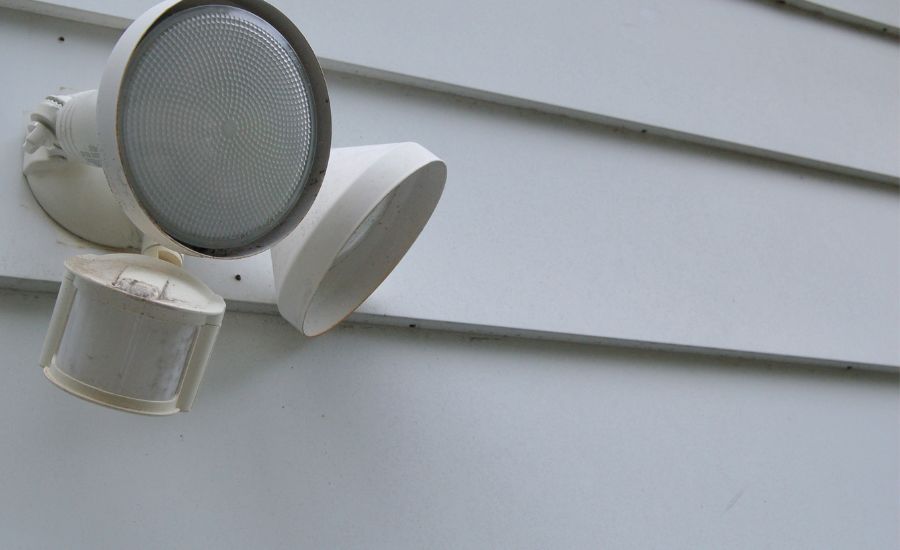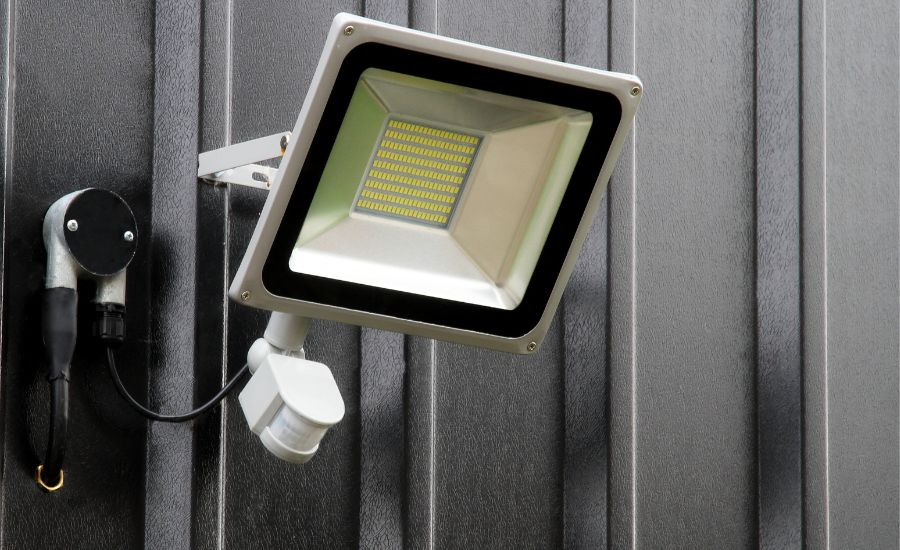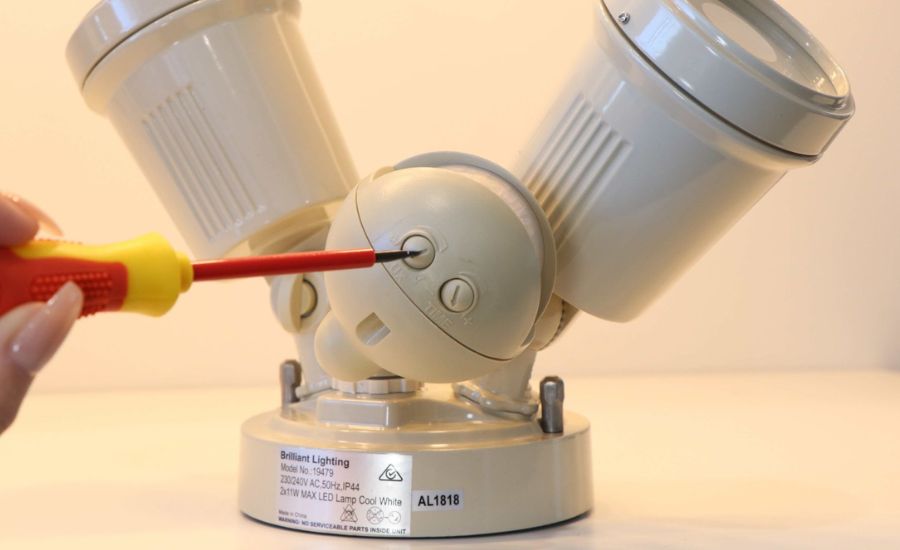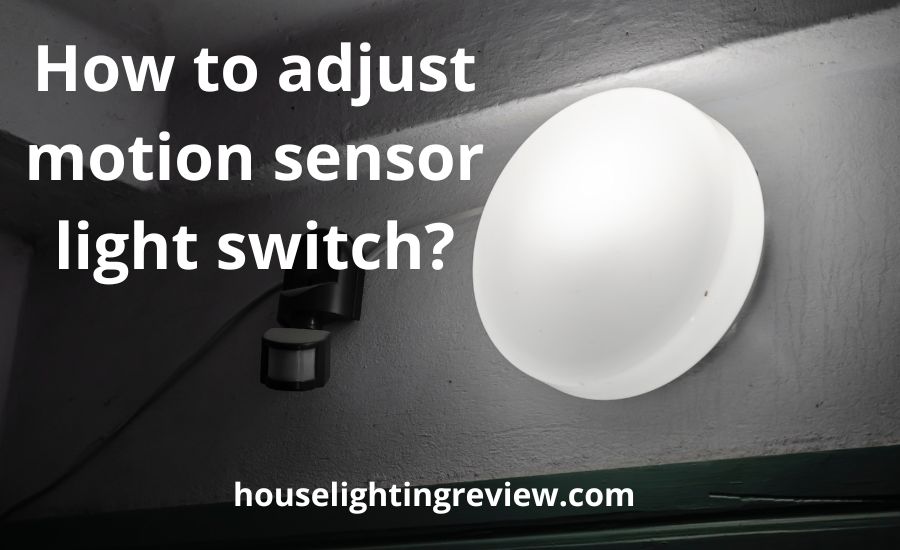Motion sensor lights are a type of lighting technology in which a motion sensor detects people and automatically turns them on and off. Such lights are frequently utilized in outdoor areas when it’s dark and there’s no natural light to enhance home security.
In this article, we’ll discuss how sensor switches work and how to customize them for your specific needs. We’ll also provide detailed instructions on how to adjust motion sensor light switch and offer tips for maximizing their functionality.

Understanding sensor light switches
Motion sensor light switches employ infrared radiation or microwave technology to detect movement and then automatically turn on. When movement is spotted, these motion sensor light switches send a signal (possibly with a time delay), and then the light turns on. When the movement stops, the lights automatically turn off within a certain period.
There are two main types of these light switches: passive infrared (PIR) and microwave. PIR sensors (Leviton motion sensor switches, for instance) spot changes in infrared radiation, which is emitted by living beings and objects with a temperature above absolute zero.
Microwave sensors, on the other hand, emit low-power microwave signals and detect the changes in the reflections caused by moving objects.
Common features and configurations of light switches include sensitivity, range, and duration. Sensitivity refers to the grade of movement required to activate the sensor, while range refers to the distance from which the sensor can spot motion. Duration refers to the time it takes for the lights to turn on once motion is sensed.
Some light switches also have additional features, such as varying levels of light, ambient light, a time delay, hand modifications, a vacancy sensor switch, as well an occupancy sensor switch, and the ability to manage multiple lights simultaneously.
Factors to consider before adjusting light switches
It’s important to consider several factors to ensure optimal functionality.
The size and location of the area being monitored
The size and location of the monitored area establish the required ranges and sensitivity parameters for the motion sensor switch. Larger areas could require a wider range and higher sensitivity, while smaller areas may require a narrower range and lower sensitivity.
The type of light bulb being used
The type of light bulb in usage can affect the performance of the motion sensor switch. LED bulbs are generally recommended as they are energy efficient, have a longer lifespan, and are less likely to trigger erroneous alarms.
The motion sensor sensitivity
The sensitivity level of a motion sensor must be set based on the degree of activity in the monitored area so as not to cause electricity waste. For example, if the sensor is installed in a high- or low-traffic area, such as a hallway or bedroom, it may need to be set to a higher or lower sensitivity degree to ensure that it spots movement.
How to adjust motion sensor light switch?
Adjusting motion sensor light switches is a simple process that can be done in a few easy steps.
Turning the power off
Before making any adjustments, it’s important to manually press and so shut off the electricity to the motion sensor light switch at the OCPD to avoid electrical shock.
Locating the adjustment parameters
The adjustment parameters for a motion sensor light switch might be located on the sensor itself or a separate control panel.
Refer to the manufacturer’s instructions to locate the adjustment settings and remove the cover plate.
Adjusting the sensitivity of the light sensor & the light sensor value
The sensitivity and light sensor value default setting manages the ease at which the motion sensor light switch is triggered. Set the default setting based on the size and location of the monitored area, as well as the level of activity in the area.
Vacancy mode & occupancy mode (occupancy sensor)
Vacancy mode and occupancy mode are the different settings that can be used with motion detector lights to optimize their performance and energy efficiency.
Vacancy mode is designed for spaces that are only occupied occasionally. Once triggered, the motion detector will solely illuminate if motion is noticed and will turn off automatically within a predetermined time. Even though the room is filled, lights won’t switch on in vacancy mode if there is no movement sensed.
Occupancy mode, on the other hand, is designed for spaces that are occupied frequently. When movement is sensed, the motion detection mode is activated and remains active for as long as the space is occupied. Even if the room is vacant, the lights are going to stay on if movement is sensed in occupancy mode.
Occupancy mode ensures that the area is always well-lit and reduces the need for manual adjustments.
Both vacancy mode and occupancy mode can be useful in different settings, depending on the pattern of occupancy of the space. For example, vacancy mode may be more appropriate for a storage closet that is only accessed occasionally, while occupancy mode may be more appropriate for a conference room that is frequently used for meetings.
By using the appropriate vacancy or occupancy mode, you can optimize the performance and energy efficiency of your motion detection mode lights.

Changing the duration of the light sensor
The duration configuration controls the time the light sensor stays on after movement is spotted. Adjust this setting based on the length of time you need the lights to stay on. You can also adjust time delay, ambient light, or vacancy sensor switch/occupancy sensor switch features.
Testing the parameters
Following making adjustments to the light switch, test the configurations by walking in front of the sensor to ensure that the lights turn on and off as expected (immediately or with a time delay; is it ambient light or a vacancy sensor/occupancy sensor?).
Tips for customizing your sensor switches
Customizing the motion sensor light switch can help optimize their performance and make them more convenient to use.
Adjusting the angle and direction
The angle and direction of the motion sensor can affect its reach and sensitivity/ambient light feature. Adjust the sensor to face the area that needs to be monitored for optimal performance.
Adding additional sensors for larger areas
If you need to monitor a larger area, consider adding additional motion sensors to ensure full coverage by ambient light. This can be especially useful in natural light outdoor areas or large indoor spaces.
Using smart home technology to manage your motion sensor changing
Smart home technology lets you manage the motion sensor lights remotely with a mobile app or voice command.
This can be a convenient way to turn your motion sensor switch lights on or off, configure the ambient light, and monitor your home’s security while you’re away.
Adjusting the time delay between sensor activations
Some motion sensor switches can adjust the time delay between sensor activations. Time delay means you can set the period the sensor will wait before reactivation the light after detecting motion. By adjusting the time delay, you can customize the motion sensor light’s performance to meet your exact requirements.

Conclusion
Сustomizing your motion sensor switch with the right angle, light bulbs, additional sensors, and smart home or time delay technology can help optimize their performance and convenience. With proper adjustment and customization, motion sensor switches can provide reliable security and convenience for years to come.
FAQ
What are the 3 settings on a motion sensor light?
Most motion sensor switches have three settings that can be adjusted to customize their performance with auxiliary buttons: sensitivity, range, and duration. Sensitivity controls how easily the sensor is triggered, range determines the distance at which the sensor can detect motion, and duration controls how long the light stays on after motion is detected.
How do you calibrate a motion sensor light?
Calibrating these light switches involves adjusting the sensitivity, range, and duration settings to optimize the sensor’s performance.
To calibrate the light, follow the step-by-step guide or auxiliary buttons provided by the manufacturer, which typically involves turning off the power, locating the adjustment settings, adjusting the settings, and testing the sensor’s response to movement.
How do I stop my motion sensor light switch from turning off?
If your sensor light switch is turning off unexpectedly, there may be an issue with the sensitivity, range, or duration settings. Adjust these settings according to the manufacturer’s instructions to ensure that the light stays on for as long as you need it.


